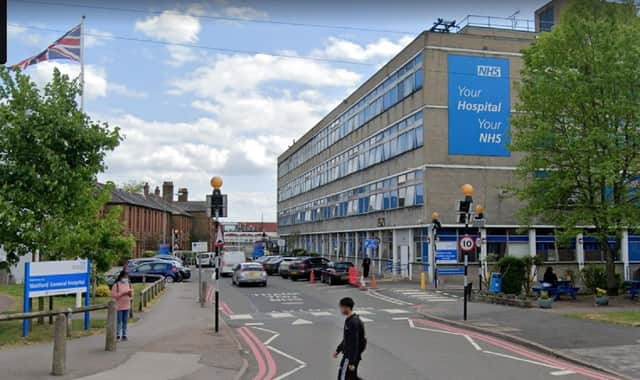Operating theatres in west Herts hospitals not fully used, data shows


While thousands of people are waiting for hospital treatment across west Hertfordshire, operating theatres are not being fully used, it has emerged.
Data presented to the latest meeting of the West Hertfordshire Teaching Hospitals NHS Trust (WHTHT) board shows more than 50,000 people waiting for treatment.
Advertisement
Hide AdAdvertisement
Hide AdAnd more than 2,000 of those have been waiting in excess of a year (52 weeks).
Yet operating theatres at Watford General and St Albans City hospitals are not being fully used.
Last month (March), according to the data, operating theatres at St Albans City Hospital were in use for 76.9 per cent of the available time.
That’s the equivalent of theatres at the St Albans hospital standing empty for almost one in every four available hours.
Advertisement
Hide AdAdvertisement
Hide AdAnd theatres in Watford General were used for just 65.4 per cent – equivalent to theatres standing empty for one in every three available hours.
The data is being collected using a new reporting tool, which ‘went live’ at the Trust in February (2023).
Commenting on the data to the Local Democracy Reporting Service, WHTHT chief operating officer Sally Tucker highlighted ongoing work to improve productivity.
“We have embarked on a theatre productivity programme to support our elective recovery programme and reduce waiting times for patients,” she said.
Advertisement
Hide AdAdvertisement
Hide Ad“We are primarily focusing on our theatres at St Albans City Hospital where we perform elective or planned care operations.
“Two theatres at Watford General Hospital are used for emergency procedures and trauma which means there will always be challenges in meeting the 85 per cent standard of theatre use there due to the unpredictable nature of demand.”
Meanwhile, wider data published to board members shows that in February the overall theatre utilisation rate across the two hospitals was 72 per cent.
Compared to January, the theatre hours lost through late starts and early finishes decreased.
Advertisement
Hide AdAdvertisement
Hide AdHowever, fewer procedures were undertaken when compared to January.
The data does not include the number of total hours the theatres would be available, if running at full capacity.
Meanwhile waiting time data also presented to the board shows that in February no patient had been waiting for two years or more (104 weeks).
And bosses say there ‘continues to be good improvement’ in the reduction of those waiting for 78 weeks or longer – which data shows was 38 patients in February.
Advertisement
Hide AdAdvertisement
Hide AdAt the same time there were 2,315 patients who were reported to have been waiting 52 weeks or more – of which 607 had been waiting in excess of 65 weeks.
The data is contained in reports that were presented to a meeting of the Trust’s board on April 6.
Commenting on the number of patients waiting for treatment, chief operating officer Sally Tucker said: “We have made significant progress in terms of eradicating 104 week waiters and, except for a very small number of patients, those waiting 78 weeks.
“We have a good framework in place to improve patient waiting times and are now further reducing long waits with a view to eradicating 65 week waits by the end of March 2024.”